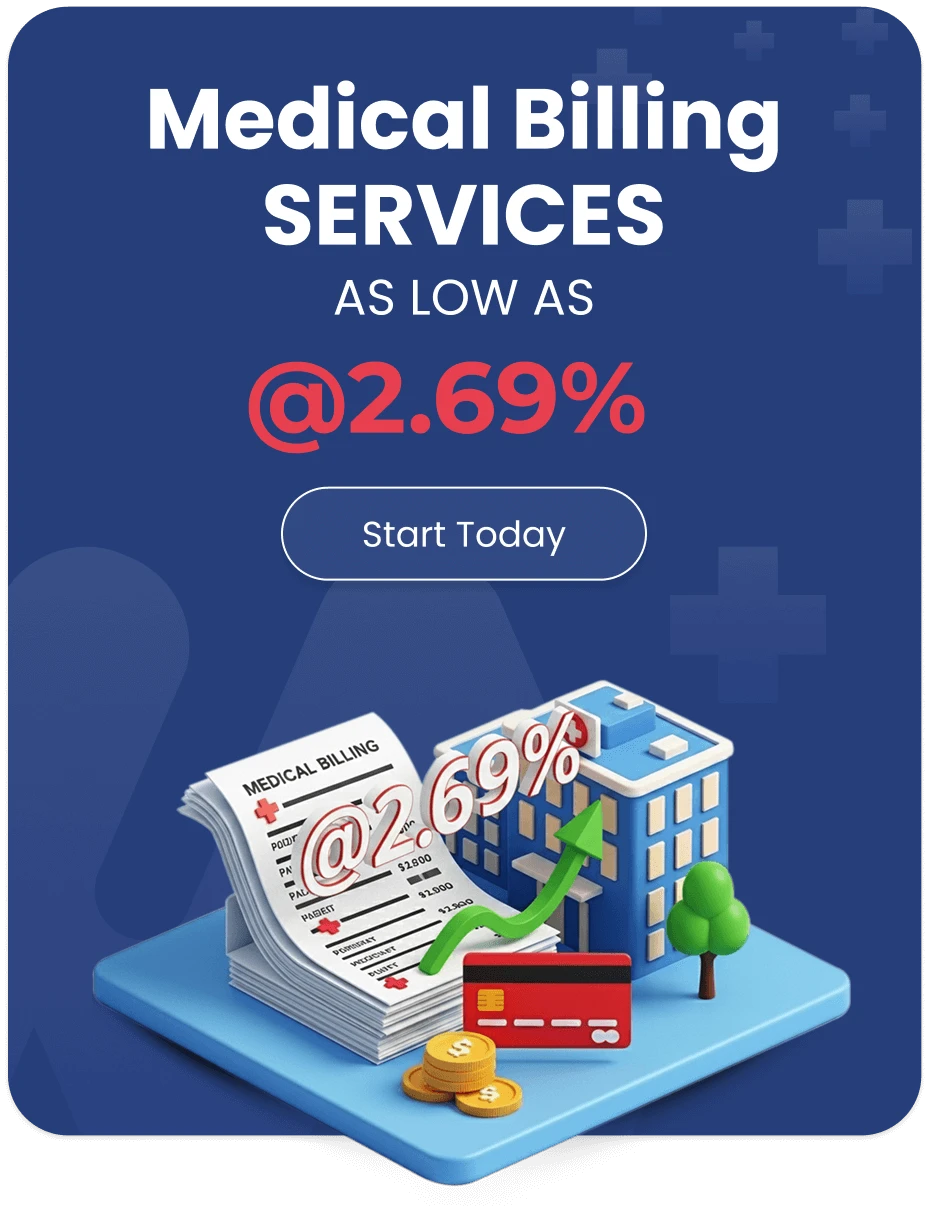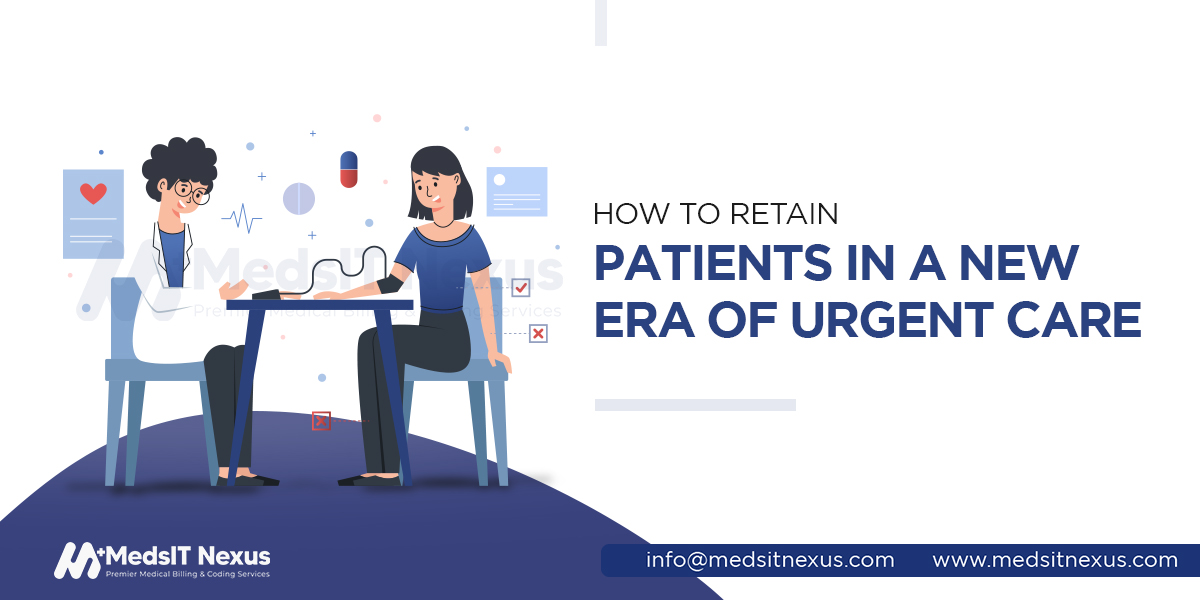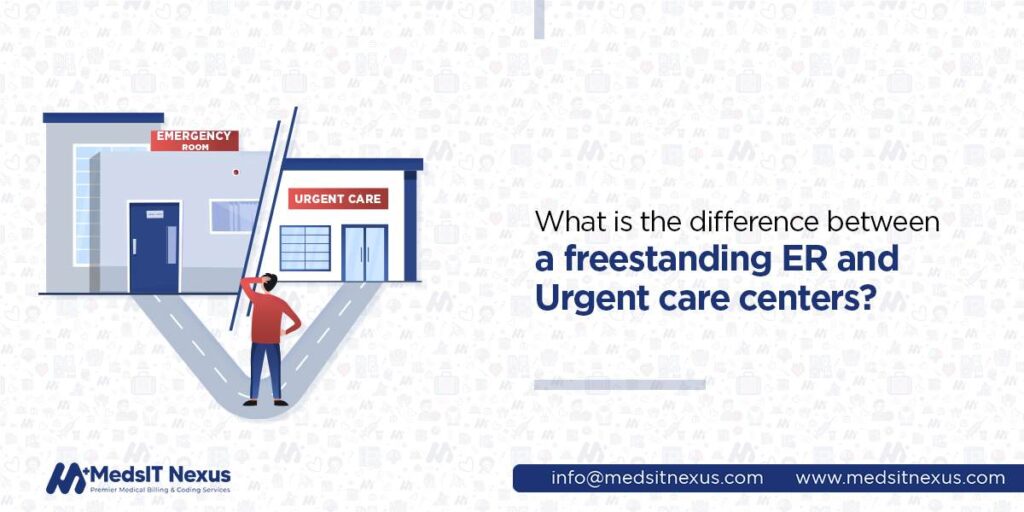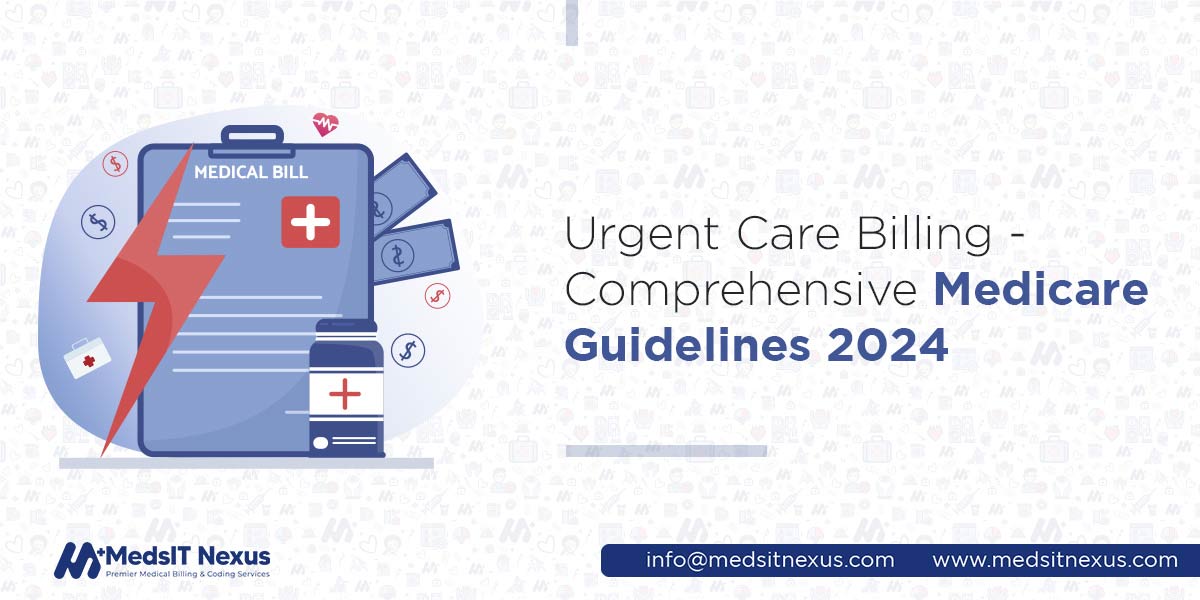Patient Education: A Key to Successful Urgent Care Billing
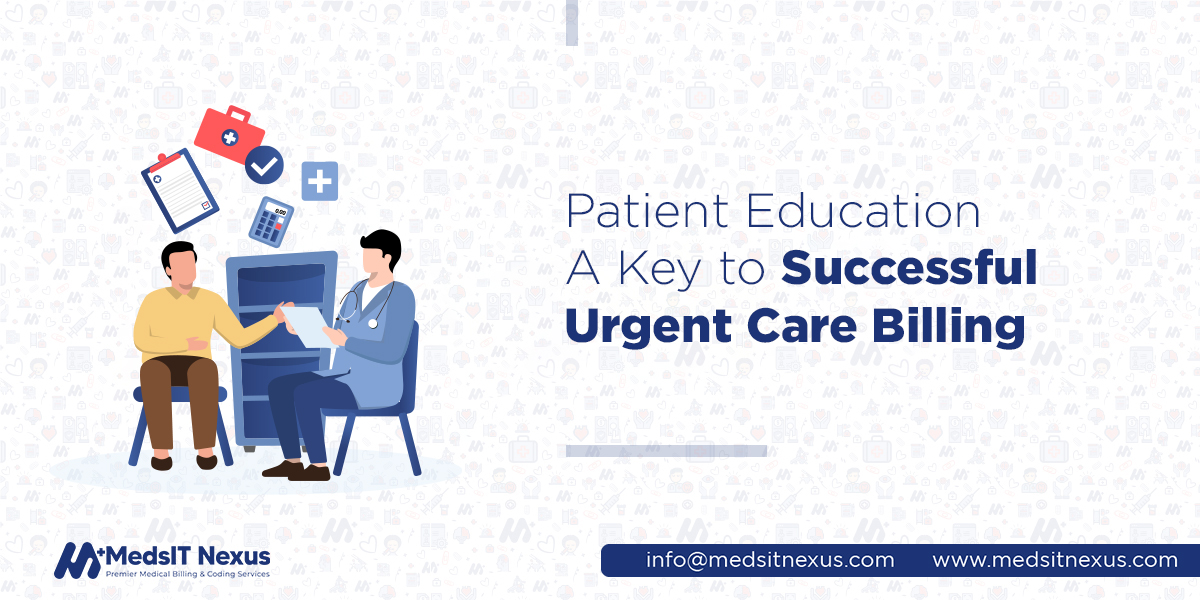
The economic and financial burdens of urgent care services, either direct or indirect expenses, have
risen to the extent that these are threatening the reimbursement of urgent care facilities. Patients
often get bills without clear justification/explanation of the given services, their expenses, and the
coverage. This happens due to a need for more understanding of complex codes, bewildered bills, and
out-of-pocket (OOP) charges, fostering patient confusion and reduced provider revenue. To resolve the
issue, the need for patient education in urgent care billing has been widely recognized because
well-educated patients are more likely to comprehend and manage their care and financial process and
responsibility, promoting compliance and decreasing unpleasant billing experiences. Moreover, patient
education is a crucial component of urgent care billing. Owing to this, prioritizing patient
understanding in the urgent care billing
process empowers transparency and a strong relationship between
patients and urgent care providers.
As there is an increased demand for urgent care providers and increased requirement for value-based
services, urgent care facilities find less time to contact patients to help them educate them about
complex urgent care billing in the USA. To navigate the issue, urgent care organizations are moving
towards outsourcing their billing service. If you want to outsource urgent care
billing and search for a
trustworthy partner, MedsIT Nexus is ready to shake hands.
Exploring the importance of patient education on urgent care billing
Patient education and urgent care billing are two entities of better urgent care organizations. Patient education in urgent care billing is a process by which urgent care professionals convey information to patients to enhance health status and promote involvement in decision-making regarding treatment and financial responsibility to incorporate knowledge about rendered services, care of disease, and their costs. About $69-100 million is burnt out to resolve the issue caused by the lack of education in the US. The healthcare experts mentioned that urgent care providers should educate patients so that they may make informed decisions. Let's discover how education will assist in streamlining urgent care billing.
Better Insurance Verification
Many people believe that their insurance policy covers all the expenses of their urgent care visit. According to the American Institutes for Research, only 9% of Americans know about premiums, coinsurance, and deductibles (contractual amounts between insured patients and the insurance companies the patient is responsible for paying). They get frustrated after receiving bills; therefore, you need to tell people that these out-of-pocket expenses are related to the difference between the amount that insurers pay depending on EOB and the patient's total bill. After receiving the amount and EOB from insurers, the patient will pay the amount left.
Copay=Total bill - an amount that insurers pay
When you educate patients that Medicare Part-B covers 80% of the services, and they might still be obliged to pay some amount, they will assist in any way for better insurance verification to know about their financial responsibility. This way, more accurate information about coverage, patient eligibility, and copayment obligations will be obtained to escape claim denial.
Error prevention
Errors of execution and planning errors are the two significant types of errors leading to unsuccessful processes and patient harm. When you foster education about the insurance verification process and its importance, patients become more conscious about providing accurate information about their insurers and all insurance details, fostering more possibilities of precise data for insurance verification and, thus, clean claims. This assists you in making informed decisions about the treatment and streamlining urgent care revenue cycle management.
Reduced claim denials
According to the Journal of AHIMA, incomplete or inappropriate information and not obtaining prior authorization are among the factors that lead to claim denial. When patients are provided education that accurate and updated information, as well as patient engagement for insurance coverage, decrease the possibilities of claim denials, they will pay attention to details and ensure accuracy in providing primary and secondary insurance information in preventing claim denial from their side and help you in updating records whenever there is a change in the given information.
Patient satisfaction
Patient education is a planned interactive program that sets the tone for the patient experience. It can potentially be an economical and effective means of improving patient satisfaction, an essential indicator for measuring the quality of services. According to a survey, 98% of the hospital staff consider that patient education leads to patient satisfaction. When you keep patient informed about the step of billing and their out-of-pocket (OOP) expenses, it will foster a sense of transparency and prevent the likelihood of surprise billing. This will ultimately lead to more patient trust and satisfaction, positively affecting your outcomes, patients' retention, and malpractice claims.
Increased reimbursement
The increased shift towards value-based services accelerated the shift toward patient-centric care, complimenting patient education. Investing more efforts towards patient education has proven to meet the criteria of value-based services. The more value-based treatment and billing, the more streamlined the urgent care RCM. An online article stated, "One day, the reimbursement of healthcare organizations will demand providing proof of fostering patient education." Regarding this, Quality Payment Programs (QPPs), Hospital Readmissions Reduction Programs (HRRP), and Value Modifier (VM) are value-based reimbursement programs to adhere to payments for quality & cost-effective care, to drive betterment in health outcomes, and to increase the utilization of urgent care information.
Strategies for patient education success
There is an increasing need to develop and implement updated, comprehensive, and concise patient education handouts, and urgent care organizations should incorporate uniform patient education methods into electronic health records systems to assist patient education. The use of education methods differs from organization to organization; however, the strategies below will help you.
1st Strategy: Stimulate patient interest
Each patient has a different medical background and individualized circumstances that impact how you should approach them. Moreover, not all patients have the same interests, so you must take into view what is essential for each patient to stimulate patient interest in what you are delivering.
- Establish rapport by highlighting key points
- Asking questions about their confusion
- Consider specific patient concerns
- Some may require detailed information, so prepare a whole chart covering all aspects.
- Some may want to-the-point information, so prepare just a checklist for them.
2nd strategy: Employ patient education technologies
Now, it is easier than ever to go beyond patient handouts to deliver knowledge and education to patients
in an economical and time-saving manner, thanks to technology, which has redefined how providers and
patients communicate. Besides spending time reaching patients manually, implementing automation is also
a handy approach.
Automated text messages: Patient education can also be delivered using standard formats
such as written messages linking to educational blogs, online sources, and videos to help deliver
directly without face-to-face meetings, hence reducing the constraints of time, distance, and location.
These texts can be timed precisely, ranging from a minimum of reminders to many throughout the day.
Automated medical answering services: Automated answering services, including voice
chatbots, have the potential to deliver education with better access to patients to information about
procedures and finances. This robotic process automation (RPA) is involved in education-level services
providing answers to FAQs.
Online portals: Patient portals are powerful tools that boost patient engagement by
facilitating secure patient-provider communication and real-time updates. These portals also provide
patients access to their medical records, educational materials and resources, secure messaging, and
telehealth. In a research, 46 reported rates of patients using educational services in patient portals,
showing that patients increasingly use these educational resources because they find them beneficial.
3rd strategy: Use plain language
Patients often consider it challenging to understand the complex billing language, causing communication to be misunderstood, partially understood, or misinterpreted, and hence, the probability of surprise billing will occur. Regarding this, the Joint Commission found that poor oral communication caused 10% of sentinel events. Patients are more prone to achieve goals and positive outcomes when they get easy-to-read and engaging educational resources; thus, using simple and straightforward language is key to increasing literacy. Avoid using technical language and abbreviations while educating patients to help them quickly understand their billing procedure, copay, and deductibles.
4th strategy: Use multiple methods
- One-on-one discussion must be used in every patient encounter and requires a multidisciplinary approach that takes into account culture, literacy, and learning styles for effective communication; however, you must have time, skills, and enough training to conduct verbal education.
- Providing visual aids such as videos, diagrams, and infographics assists patients in navigating the billing process and understanding the complex insurance coverage process because a study says that people remember only 10% of what they hear while 50% of what they see.
- Brochures & pamphlets are appropriate for specific topics and learning styles.
5th strategy: Provide detailed & clear invoices
Providing detailed billing invoices about the services is another strategy to educate patients. However,
to make this a helpful strategy, it is emphasized to break down the services, and transparently mention
associated costs and insurance adjustments, hence helping patients identify the discrepancies and clear
any confusion regarding bills. This must include:
Pre-visit cost estimation: Before their visit, informing patients about the estimated
expenses of the visit, insurance coverage, deductibles, and OOP expenses will help them in making
decisions about getting treatment, and they will prepare themselves accordingly. As per research of
TransUnion healthcare, around 75% reported that if they pre-treatment estimation of OOP expenses, they
can pay better.
Post-visit cost: After the patient gains the services, it is better to provide them a
billing statement about the exact cost of the visit so they do not delay in payment.
Reach out to experts for more effective urgent care billing
Implementing effective education is an art and science that needs specific strategies to be carried out for successful billing, which MedsIT Nexus professionally does. We have a specialized patient access team; moreover, each member involved in the billing process collaborates with your patients to make urgent care billing and coding flawless. Our team implements effective methods to educate your patient about their billing procedure to help them avoid surprise billing and take your billing to the following heights. Collaborate with us for professional services and use a trustworthy billing partner.
Samuel White, MBA-HC, CPAR -
Lead Author & Senior Healthcare Revenue Cycle Strategist at MedsIT Nexus
Leads editorial process for the publication of Technical RCM guides, reimbursement optimization case studies, and compliance-focused research content, expert evaluations of RCM software and medical billing solutions.


